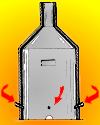
On 23 Jun 1857, a U.S. patent was issued to William Kelly. He had been experimenting with the steel-making process for a few years, but he had not patented it until he heard that the Englishman, Henry Bessemer, had been granted a U.S. patent on a like process. Kelly had not filed first, but he was able to convince the patent office that he was the first to invent the air-blast method of forming steel from iron in a cupula. Kelly thus held rights of priority for his patent. However, Bessemer had important additional steps worked out to mass-produce steel. Bessemer was a businessman and industrialist who made the Bessemer process profitable, but Kelly still benefitted from his share, though smaller, of the vast profits.
A Scientific American article was published in Oct 1857, giving its commentary on 'An English Opinion of the United States Patent Office Management'. It makes interesting reading to see the 19th century patent dispute, as viewed from opposite sides of the Atlantic.
To know more about the innovation to which William Kelly made claim, you can read his U.S. patent No. 17,628 (23 Jun 1857), 'Improvement in the Manufacture of Iron', which is quite short, and easy to understand.

On 23 Jun 1942, English cosmologist and astrophysicist, Martis Rees was born. He became Astronomer Royal in 1995. He has written numerous magazine and newspaper articles on scientific subjects, most for general readership—as well as a number of books. Today's book pick is: Our Final Hour: A Scientist's Warning, by Martin Rees, which highlights concerns of terror, error, and environmental disaster threats to humankind’s future. His elegantly presented arguments are provocative, but rooted firmly in science. For example, nano-machines stand poised to revolutionize technology and medicine, but what happens if these minuscule beasties break their leash and run amok? There are too many speculative TV shows to count, which are shallow and sensationalistic. But in this book you will find food for thought, soberly written. You can be your own judge of how much fear or curiosity you take away from reading this book. A review in the journal Nature called it “Provocative and educational … A twenty-first-century analogue of Rachel Carson’s Silent Spring.”
It is available from Amazon, typically about New from $5.24. Used from $2.00. (As of earlier time of writing - subject to change.)
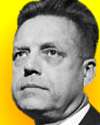 | There is a tendency to consider anything in human behavior that is unusual, not well known, or not well understood, as neurotic, psychopathic, immature, perverse, or the expression of some other sort of psychologic disturbance. |
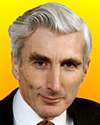 | If we ever establish contact with intelligent aliens living on a planet around a distant star … They would be made of similar atoms to us. They could trace their origins back to the big bang 13.7 billion years ago, and they would share with us the universe's future. However, the surest common culture would be mathematics. |
 | Science is a Differential Equation. Religion is a Boundary Condition. |
| Before you look at today's web page, see if you can answer some of these questions about the events that happened on this day. Some of the names are very familiar. Others will likely stump you. Tickle your curiosity with these questions, then check your answers on today's web page. | |
| Births | |
 | On 23 Jun 1937, English geologist and paleoclimatologist, Nicholas Shackleton was born. He helped identify carbon dioxide as a greenhouse gas. Shackleton studied the ancient climate changes of the Quaternary period (the last 1.8 million years), during which there were periods building up massive ice sheets and mountain ice caps alternating with warm weather when the ice receded. He specified from his data, a number of years by which Ice Ages recurred. What number of years (to the nearest 10,000) did Shackleton say his data roughly showed between Ice Ages? |
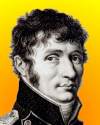 | Étienne-Louis Malus, born 23 Jun 1775, was a French physicist who discovered that light, when reflected, becomes partially … (?) … Can you complete the sentence? |
| Deaths | |
 | A U.S. physician and medical researcher (1914-1995) was the creator of the first safe and effective vaccine against poliomyelitis (infantile paralysis). Can you name this scientist? |
| Events | |
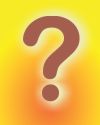 | On 23 Jun 1982, a record low temperature was recorded at the South Pole. To the nearest ten degrees, what was this record low temperature? |
 | On 23 Jun of a certain year, Arthur Melin obtained a patent for the hula-hoop. An Australian visiting California told Melin that in his country, children twirled bamboo hoops around their waists in gym class. Melin, who started toy giant Wham-O in 1948, used savvy marketing to create the hula-hoop craze. Another of his successful simple toys was the Frisbee. In which decade did Melin obtain his hula-hoop patent? |
Fast answers for the previous newsletter for June 22: the development of more than one individual from a single fertilized egg cell • Hermann Minkowski • Felix Klein • he found handwriting the tickets irksome and delaying • Galileo Galilei • the decade including the year 1978.
 If you enjoy this newsletter, the website, or wish to offer encouragement or ideas, please send feedback by using your mail reader Reply button.
If you enjoy this newsletter, the website, or wish to offer encouragement or ideas, please send feedback by using your mail reader Reply button. Your click on a Facebook, StumbleUpon, or other social button on the site webpages is also a welcome sign of appreciation. Thank you for using them.
© This newsletter is copyright 2020 by todayinsci.com. Please respect the Webmaster's wishes and do not put copies online of the Newsletter — or any Today in Science History webpage. (If you already have done so, please remove them. Thank you.) Offline use in education is encouraged such as a printout on a bulletin board, or projected for classroom viewing. Online, descriptive links to our pages are welcomed, as these will provide a reader with the most recent revisions, additions and/or corrections of a webpage. For any other copyright questions, please contact the Webmaster by using your mail reader Reply button.
--
If you do not want to receive any more newsletters, Unsubscribe
To update your preferences and to unsubscribe visit this link
Executive Real Estate Business Class
-
"It was like a man with wings. It wasn't like anything you'd see on TV or in a monster movie." ...
About the publisher
Search This Blog
Blog Archive
-
▼
2021
(585)
-
▼
June
(64)
- On This Day for June 30 - Night of the Long Knives...
- Newsletter for Wednesday 30 June.
- On This Day for June 29 - London's Globe Theatre d...
- Newsletter for Tuesday 29 June.
- On This Day for June 28 - Assassination of Archduk...
- Newsletter for Monday 28 June.
- On This Day for June 27 - Yen made official moneta...
- Newsletter for Sunday 27 June.
- On This Day for June 26 - Opening of CN Tower, Bab...
- Newsletter for Saturday 26 June.
- On This Day for June 25 - Korean War begun, Antoni...
- Newsletter for Friday 25 June.
- On This Day for June 24 - Russia invaded by Napole...
- Newsletter for Thursday 24 June.
- On This Day for June 23 - Battle of Bannockburn, C...
- Newsletter for Wednesday 23 June.
- On This Day for June 22 - Mutiny against Henry Hud...
- Newsletter for Tuesday 22 June.
- On This Day for June 21 - Japanese forces defeated...
- Newsletter for Monday 21 June.
- On This Day for June 20 - Casket Letters found, Ho...
- Newsletter for Sunday 20 June.
- Tonight at 8/7c: Watch ‘Fight the Power’
- On This Day for June 19 - Rosenbergs executed for ...
- Newsletter for Saturday 19 June.
- On This Day for June 18 - War of 1812 begun, Sir P...
- Newsletter for Friday 18 June.
- On This Day for June 17 - Arrest of O.J. Simpson, ...
- Newsletter for Thursday 17 June.
- On This Day for June 16 - First woman in space, Jo...
- Newsletter for Wednesday 16 June.
- On This Day for June 15 - Magna Carta sealed by Ki...
- Newsletter for Tuesday 15 June.
- On This Day for June 14 - First prisoners at Ausch...
- Newsletter for Monday 14 June.
- On This Day for June 13 - Historic meeting between...
- Newsletter for Sunday 13 June.
- On This Day for June 12 - Election of Boris Yeltsi...
- Newsletter for Saturday 12 June.
- Listen Now! Blindspot: Tulsa Burning Podcast
- On This Day for June 11 - Oklahoma City bomber exe...
- Newsletter for Friday 11 June.
- On This Day for June 10 - First “witch” hanged in ...
- Newsletter for Thursday 10 June.
- On This Day for June 9 - Landslide reelection vict...
- Newsletter for Wednesday 9 June.
- On This Day for June 8 - Michelangelo's David inst...
- Newsletter for Tuesday 8 June.
- Action required: Update your HistoryExtra password
- On This Day for June 7 - Lateran Treaty ratified, ...
- Newsletter for Monday 7 June.
- On This Day for June 6 - Normandy Invasion begun, ...
- Newsletter for Sunday 6 June.
- On This Day for June 5 - Start of the Six-Day War,...
- Newsletter for Saturday 5 June.
- On This Day for June 4 - Dunkirk evacuation ended,...
- Newsletter for Friday 4 June.
- Tonight: ‘Alone’ Returns at 9:30/8:30c
- On This Day for June 3 - Pro-democracy protest in ...
- Newsletter for Thursday 3 June.
- On This Day for June 2 - Elizabeth II crowned quee...
- Newsletter for Wednesday 2 June.
- On This Day for June 1 - Debut of CNN, Morgan Free...
- Newsletter for Tuesday 1 June.
-
▼
June
(64)
-
Blogroll
-
About
HistoryFact










0 comments:
Post a Comment